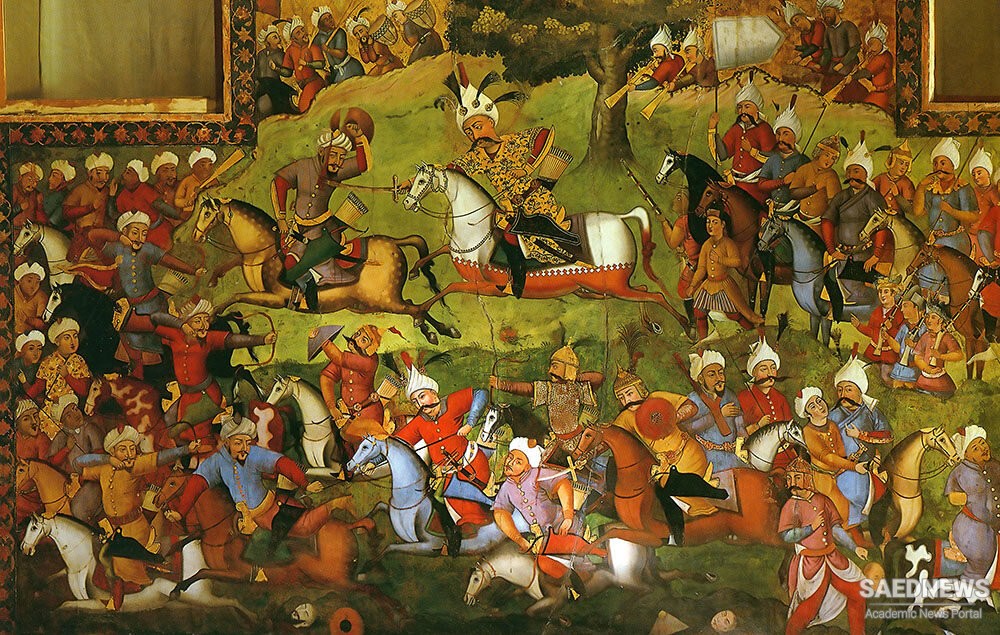To avoid the problems that had crippled the empire in the preceding decades, Abbas worked to neutralize the decentralizing tendencies of tribal loyalties and ambitions and built an army loyal to the crown by fully institutionalizing military and domestic slavery. In time, Abbas would eliminate the Uzbek threat from the east, expel the Ottomans, and reclaim the boundaries of Sassanian Persia. Abbas restored Persian military prestige so much that, according to an Ottoman officer, “Those conceited heroes who in the coffee- houses have mocked at the qizilbash for their cowardice, now when they behold the most insignificant of them three miles away on the road, compare him with Rustam, the son of Zal.” (Rustam, the hero of the Shahnameh, is the Persian equivalent of the West’s Achilles or Hercules.) Abbas reformed the economy while exploiting Iran’s position on continental trading routes to generate the national wealth needed to support a royal army and his ambitions.
Abbas’s primary solution to the latent threat of insurrection was to expand and rely on the institution of slavery, where master and slave had a moral obligation to be loyal to and trust each other. Despite their title of ghulam (slave or crown servant), these Georgians, Armenians, and Circassians were freed and converted Muslims. Under Abbas, many of the ghulams entered the royal household as adopted brothers and sons and were educated and groomed for positions within the army and the bureaucracy. Abbas relied on them heavily, and, by the mid- seventeenth century, the ghulams held all key positions in the military and financial structure of the empire. Because the ghulams were more trusted, they were given control of the newly acquired firearms as the shah’s musketeers, nontribal cavalry, and artillery. Abbas even gave command of his armed forces during one period to a Georgian ghulam who liberated Khorasan from the Uzbeks and Bahrain from the Portuguese.
Two English adventurers, Sir Anthony and Robert Sherley, assisted Abbas’s reorganization of the Persian army. The two Englishmen were part of a mission sent to Iran in 1598 to get Abbas to ally with the Christian nations of Europe against the Ottomans. Robert Sherley helped to organize the expanded artillery force and created the fi rst standing musket- armed infantry units. These Safavid formations were established along European lines, a model the Ottomans had already adopted, and were given European- style training. The Sherley brothers had been accompanied by a party of cannon founders, who helped transfer European artillery production skills to the Safavids. Other gunpowder weapons for the army had to be imported, however, because the Persians lacked the ability to mass produce muskets and fi rearms. At roughly the same time, the English East India Company arrived to provide Abbas new trade routes to Europe that avoided Ott oman interference and duties. In addition to improving Abbas’s economic position, the English naval presence in the Persian Gulf provided a potential ally against Persia’s enemies in that area.


 Shah Cheragh Holy Shrine, Shiraz, Iran
Shah Cheragh Holy Shrine, Shiraz, Iran














































